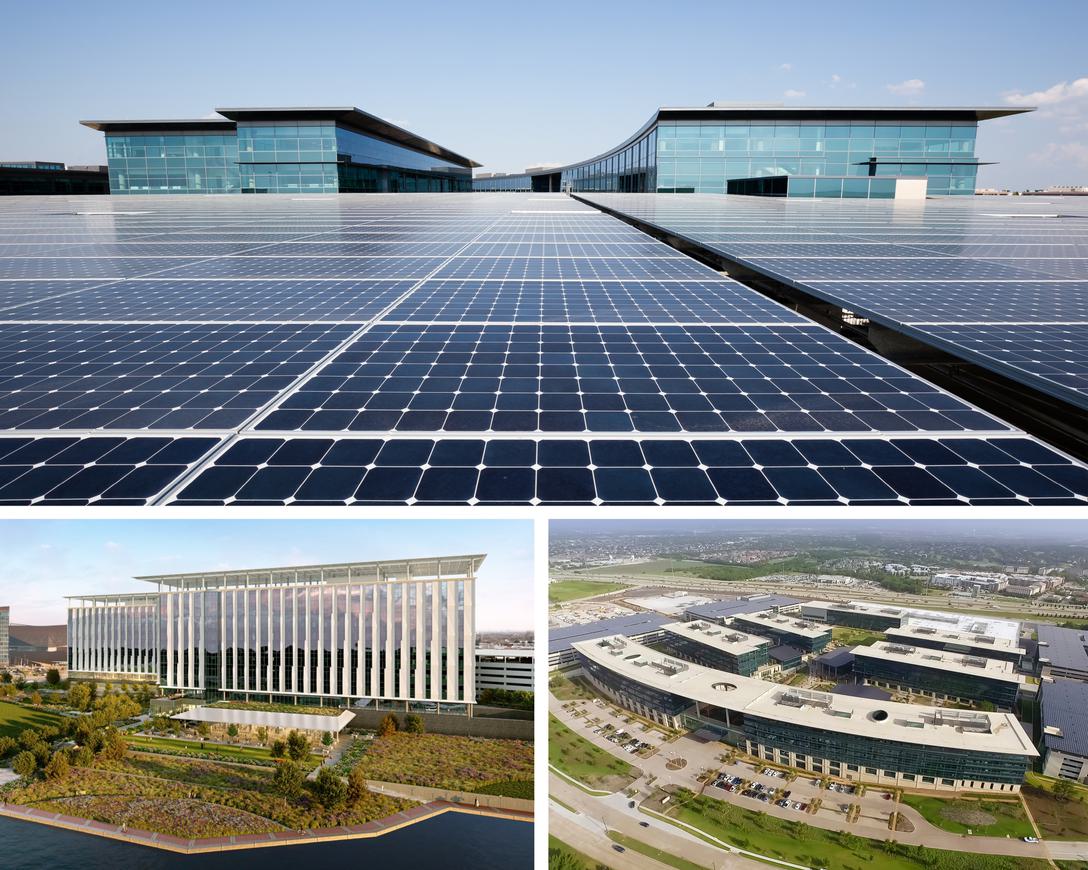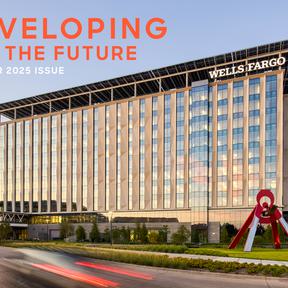
BEYOND NET ZERO TO NET POSITIVE: CONSIDERATIONS AND STRATEGIES
05/08/24 | Thought Leadership
During our many discussions with Corporate America, the topic of preserving our environment continues to be a priority. We are seeing companies evaluate and implement strategies to combat climate change, as the scientific community voices the need to reduce CO2 emissions by 2030, with a goal of reaching 100% net zero by 2050. One way to tackle this is the familiar net-zero approach, however, there is another option for consideration.
There’s another level of environmentalism that’s not quite so well-known as net zero, called net positive. At KDC, we’re currently developing a corporate campus that will be a net-positive energy template when it’s completed. Going through the design, preconstruction and building phases, we learned that a net-positive focus requires plenty of advance planning and forethought well before design and groundbreaking.
Comparing the “Nets”
But first, let’s break out the dictionary and compare net zero and net positive in the built environment.
A net-zero energy building produces as much energy as it uses over a specific period. A net-positive energy building goes a few steps further and creates more energy annually than that facility uses.
Solar panel installations are one example that can be utilized by a net-positive energy building. This is because solar panel installations generate other positive outcomes by:
- Generating fewer environmental risks from fossil fuel use
- Requiring less water for cooling versus that used by traditional power plants
- Reducing overall air and water pollution, leading to healthier ecosystems and populations
A rooftop photovoltaic array can also generate enough energy to power a building and give back to the electrical grid. In short, net zero is a balancing act. Net positive goes beyond the balancing act to support more extensive ecological efforts.
In-Depth Considerations
When planning this project, we didn’t just jump in and hope for the best. A net-positive strategy means careful consideration of multiple factors like the following:
A highly accurate energy model
“Energy model” is a fancy term for inputs. “Inputs” is a fancier term for “what that energy will power.” An energy model for a net-positive building requires a detailed analysis of power usage focused on that facility’s every nook, cranny and corner.
In developing this project, our energy model considered all spaces. It also measured every outlet, plug, switch and piece of equipment. Another important input analysis included hours of operation – at all times of the year.
As an example, let’s examine the project’s kitchen. Unlike natural-gas-powered corporate kitchens, the one in this building relies solely on electricity. In measuring usage, we considered all the equipment used in the space, the number of hours during which the kitchen is in operation, the outlet an employee uses to charge his laptop battery while enjoying a sandwich, the microwave oven a manager uses to reheat her lunch, and so on.
A supply chain understanding
You need to know where your parts come from with any development project. This is especially true when working on a net-positive build. Let’s put it this way: When undertaking a solar array, some components are available from U.S. sources. However, your panels will likely be manufactured overseas. Be sure to research those suppliers’ reputations before doing business with them. Furthermore, because of the number of parts – and the locations from which they’re arriving — you need to allow for extra time in your construction schedule.
A backup plan is also a must. Supply-chain disruptions are a fact of life. The last thing you need is a delay because the barge containing your photovoltaic panels can’t dock at the Port of Long Beach.
Knowledgeable development partners
At KDC, we work with great designers and contractors. To ensure the net-positive goals of the project were understood and met, we retained firms with extensive experience with solar power and photovoltaic panels.
Here’s another example. Many cities don’t like ground photovoltaic panel installations because, well, they’re ugly. Enter an architect with a specialized solar-panel rooftop design: This architect’s knowledge about and experience with solar-power design means the building will have a rooftop array that blends seamlessly with the building’s architecture.
Whether it’s a good idea
There are many good reasons to pursue a net-positive strategy. There are also multiple upfront costs and resources involved.
Before heading down the net-positive path, gather your team, get all the facts and honestly assess your project’s size and scope. There’s no shame if a net-positive strategy isn’t economically feasible. But there could be a lot of unexpected — and expensive — pitfalls if you go full steam ahead without weighing all the pros and cons.
Plus, net positive is still new. There aren’t many standards or definitions available to help. Because of this, one feasible idea could be a blend of net-positive and traditional off-site power generation. This path still supports and enhances sustainable goals.
To Be (Positive) or Not
Net-positive development is excellent for supporting sustainability while creating extra energy that can be returned to the grid, thereby helping to increase a municipality’s resources. However, the process requires a stricter adherence to standards than traditional or net-zero builds. Furthermore, net-positive construction might not be appropriate for all projects; it requires upfront resources for success.
But if the move is economically feasible for projects you have in mind, developing an accurate energy model and bringing the right partners on board can lead to a successful net-positive project.





